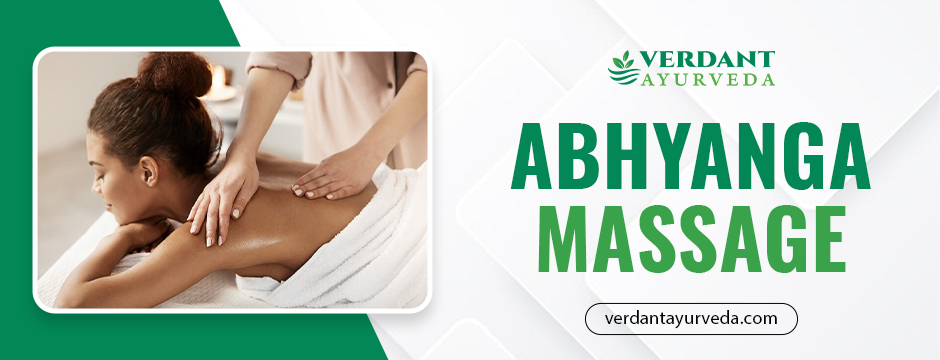Stress, pollution, and processed foods are part of our daily lives, which create a backlog of toxins and lessen our body’s ability to function at its optimum. Ayurveda, India’s time-tested system of natural healing, offers us insight. For many holistic systems of healing, Panchakarma is a strong detoxification treatment that tries to remove toxins, support and recharge the mind, and restore balance to the doshas. As part of Panchakarma, one key treatment is Abhyanga, which uses warm oil or oil in the practice of massage.
It is not just a ‘luxury’ experience; it is self-care, the type that detoxifies the body at the tissue level, improves circulatory and nervous system function, and nurtures the skin. Abhyanga Massage may have fallen by the wayside alongside other self-care routines we don’t always have time for. When done consistently and appropriately, this is the type of self-care that moves you forward on your wellness journey. This blog explains the traditional Ayurvedic concepts driving Abhyanga, its critical role in Panchakarma therapy, and how you can begin to incorporate this complementary self-health system into your wellness routine, with just some basic modifications in your home.
Comprehending Panchakarma and the Stages of Procedure
Panchakarma is the Ayurvedic system of healing. Pancha means “five,” and karma means “action”, thus there are five procedures that involve detoxification:
- Vamana (emesis therapy) – to remove additional kapha.
- Virechana (purgation) – to remove the additional pitta in the intestines.
- Basti (a medicated enema)– to balance vata.
- Nasya (nasal cleansing) – to clear the head and sinuses.
- Raktamokshana (blood letting) – to cleanse the blood (although this is done less frequently).
The body is prepared for the aforementioned procedures through Purvakarma. It refers to preparatory steps aimed at loosening toxins and preparing for the exit of toxins, as well as a good amount of Abhyanga Massage within the preparatory stages.
Benefits of Abhyanga in Panchakarma
Abhyanga is more than just a massage; it is a profound detox and rejuvenation therapy. Here’s why it’s considered vital in Panchakarma:
- Loosens Toxins: Mobilises ama (toxins) stored in tissues toward the GI tract for elimination.
- Balances Doshas: Helps regulate the body’s constitution by harmonising the three doshas.
- Improves Circulation: Boosts blood and lymph flow, improving organ and tissue function.
- Calms the Nervous System: Soothes stress, anxiety, and fatigue through touch and oil application.
- Enhances Skin Health: Nourishes and tones the skin while improving complexion and elasticity.
- Improves Sleep: Regular practice promotes deeper, more restful sleep.
- Prepares Body for Deeper Detox: Facilitates the actions of other Panchakarma treatments like Virechana and Basti.
How to Conduct Abhyanga at Home?
Professional Panchakarma therapy is optimal; however, a home-based Abhyanga practice is very effective. Here is a simple step-by-step process:
Choose Proper Oil
- Vata Dosha – warming oils like sesame or ashwagandha oil.
- Pitta Dosha – cooling oils like coconut oil or Brahmi oil.
- Kapha Dosha – lighter oils like mustard oil or eucalyptus oil.
There are also pre-formulated oils available that are designed to balance all three doshas.
Warm the Oil
Heat the oil to body temperature using a hot water bath (never microwave). When oil is warmed, its absorption and therapeutic action are enhanced.
Create the Environment
Choose a warm, quiet space. Using a towel or yoga mat helps catch excess oil. Optionally, light candles or incense for a relaxing atmosphere.
How to Massage
Starting from the head and moving to the feet, you will want to follow this order of body parts for Ayurveda treatments for back pain:
- Scalp– Use circular strokes to stimulate the scalp and hair roots.
- Face and Ears– Use gentle, upward strokes.
- Neck and Shoulders – Use kneading strokes to release muscle tension.
- Arms and Legs– Use long strokes along the limbs.
- Joints– Use circular strokes around joints.
- Abdomen and Chest – Use gentle, clockwise circles on the abdomen and gentle strokes on the chest.
Spend 5–10 minutes per body part if possible.
Rest and Absorb
Let the oil absorb for 15–30 minutes. Relax, meditate, or sip warm herbal tea.
Rinse Off Gently
Take a warm shower using a mild, natural cleanser. Avoid using strong soap, which can strip beneficial oils from the skin.
Suggestions for Effective Use at Home
- Be Consistent: Consistency increases the detoxification effect of Abhyanga.
- Use Herbal Oils: Use quality herbal oils that are dosha-specific Ayurvedic oils.
- Finish with Tea or Kitchari: Support the detoxification process with an Ayurvedic diet in the days after your Abhyanga experience.
- Don’t Apply It Immediately After Eating: Wait at least one hour after eating.
Use Warming Oils in the Winter and Cooling Oils in the Summer.
Who Should Avoid Self-Abhyanga?
Although generally safe, certain conditions require caution:
- During fever or acute illness
- During menstruation or pregnancy (consult your Ayurvedic practitioner)
- If suffering from skin infections or recent surgeries
Final Words

Abhyanga Massage, as part of Panchakarma therapy, offers a time-tested path to healing, cleansing not just the physical body, but the mind and spirit as well. While its roots are deeply embedded in clinical Ayurveda, it also lends itself beautifully to self-care at home. By dedicating just 30–40 minutes a few times a week, you can enhance your immunity, calm your nerves, and revitalise your being—naturally and holistically.
Verdant Ayurveda offers a trusted space and bridges traditional knowledge with modern needs, making Ayurvedic wellness truly accessible and effective. Whether you’re beginning your wellness journey or looking to deepen it, we are your companion for detoxification, balance, and true restoration.
